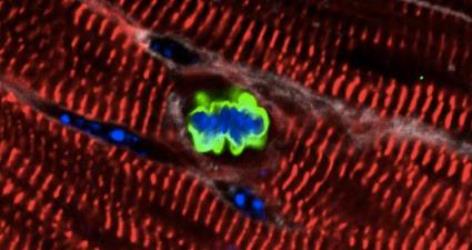Regeneration is the regrowth and replacement of living tissues or organs that have been lost or severely injured through mishaps or disease. The goal of regenerative medicine with regard to humans is to restore the structure and function of any damaged tissues or organs, including the use of techniques for ameliorating or curing injuries and diseases that were previously untreatable. Some of these methods involve tissue engineering and cellular therapies. Other aspects of regenerative medicine may involve the transplantation of cells, tissues, or organs into the body; the reprogramming of cells in a laboratory setting and then the insertion of them into the body; and the stimulation of the body’s intact cells to promote self-renewal. Regeneration may also involve the progression of an existing population of unspecialized stem cells into differentiated cells that are needed at the site of injury or loss. This area of investigation is currently very active within the field of regenerative biology and holds promise for new approaches to various medical problems. See also: Cell differentiation; Cell fate determination; Cell lineage; Developmental biology; Genetic engineering; Induced pluripotent stem cells; Morphogenesis; Regenerative biology; Stem cells

Cells of the epidermis, blood, and digestive and reproductive tracts regenerate continuously or periodically in all vertebrates. In general, mammals, birds, and reptiles have a much more poorly developed ability than amphibians and fish to regenerate complete organs; nevertheless, they can reform missing tissue and restore function after the partial removal of certain organs. Of all vertebrates, amphibians have the most highly developed capacity for regeneration. Certain species have the natural ability to regrow not only limbs and tails, but also parts of the eye, lower jaw, intestines, and heart. See also: Amphibia; Cell (biology); Cell biology
The substantial shortage of organs that are available and suitable for transplantation has given rise to a desperate need for alternative treatments for organ loss. Physicians increasingly use organ regeneration as a treatment modality for patients suffering from a loss of organ functionality. Organ regeneration involves the restoration of the anatomical structure and physiological function of an organ following its loss by trauma or chronic disease. The field of induced organ regeneration in the adult mammal is at an early stage, with most studies being focused on the skin, peripheral nerves, the conjunctiva of the eye, and the urethra. See also: Muscle development and regeneration; Sensory cell regeneration
Recently, a bioengineered kidney was transplanted into a rat. In that particular study, a rat’s kidney was stripped of its cells and repopulated with healthy new ones, whereupon the bioengineered kidney functioned like a normal one, producing urine and filtering impurities from the blood. The research confirmed that the protein scaffold of a kidney provides the architecture and chemical cues sufficient for new cells to undertake the roles of kidney cells. This discovery is notable because it may provide a solution to the present-day shortage of organs for transplantation. This method of regenerative medicine has also been used in other experimental settings to regenerate animal tracheas, bladders, livers, hearts, and lungs. See also: Biomedical engineering; Kidney; Kidney disorders; Transplantation biology





